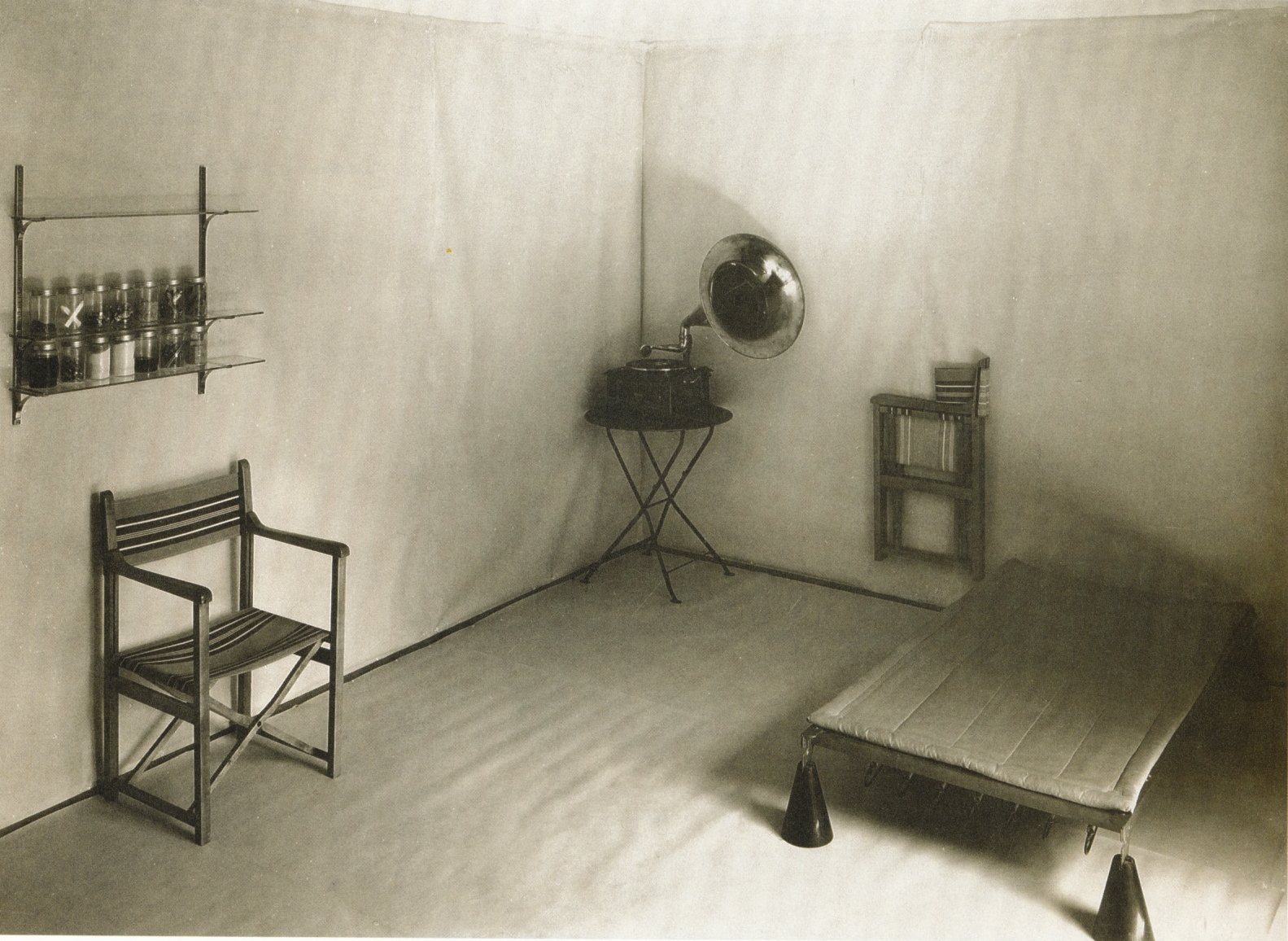Steve Jobs vs Hannes Meyer

Steve Jobs at his home in Woodside, 1983. Diana Walker.
«However, there is a much more interesting example of this sort of asceticism, which summarises in a subtle way the discontents of minimal design. It is the photograph that portrays Steve Jobs, the founder of Apple, in the living room of his house in Los Gatos, California. Taken by Diana Walker in 1983, when Jobs was already a successful multi-millionaire entrepreneur, it shows him with a cup of tea in one hand, sitting on the floor in the middle of a conspicuously empty room furnished only with a lamp and a record player. There is a certain beauty about the photograph precisely because it does not look constructed, but conveys a sense of everyday life. At the same time it is not a casual situation either. Jobs sits at the centre of the photograph starting at the viewer as if the scene in which he is the main protagonist is a sort of declaration of intent. Commenting on the photograph, he said it was just the way he was living at that time: ‘I was single, all you need is a cup of tea, a light and your stereo, you know, and that’s what I had.’ Compared to the glossy and over-designed minimalism of Pawson, or the mystical aura of Zumthor’s ‘humility’, Job’s asceticism looks more real, more genuine, and one must admit that here minimal design achieves one of its best ever performances.»

Co-op Interior, 1926. Hannes Meyer.
«There is a striking resemblance to Hannes Meyer’s Co-op Zimmer, though it is unlikely Jobs knew of the project. Indeed Job’s room is even more drastic in reducing belongings to a bare minimum. As in Meyer’s room, Job’s extreme minimalism does not renounce the record player–its frugal sense of enjoyment becomes more important here than other gadgets that are usually considered more necessary (such as a telephone or TV). The photograph confirms that in his own way Jobs was an ascetic, and understood that his ‘will to power’ could only be strengthened through careful self-control.»
A fragment of LESS IS ENOUGH by Pier Vittorio Aureli.

